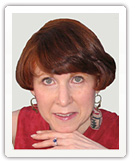e-Tips
Reviving Use of Nonverbal Cues Aids Cross-Generational Communication
In a fascinating article on the “Taste” page of the Wall Street Journal almost 5 years ago, Mark Bauerlein made a powerful case for the need to bridge the gap between the Gen Y texting culture and use of what anthropologist Edward T. Hall called “the Silent Language” - nonverbal cues or body language and voice tone. Mr. Bauerlein is a professor of English at Emory University.
The lack of nonverbal communication experience very likely impedes interviewing skills and negotiating skills. The primarily electronic communicators are missing expressive behaviors that transmit feelings, attitudes, reactions and judgments. This becomes even more significant and potentially damaging in the cross-cultural circumstances of a world of global economic and political dependency.
The fact is young people tend not to be well equipped for negotiations, interviewing, navigating the “political” dynamics of the workplace, or even their own job interviews. These have always been vital business skills. For the time being, negotiating, interviewing and influencing skills remain central to success for professionals and other knowledge workers.
While one could argue that as more business is done electronically, skills in reading nonverbal cues won’t be as important, that day is not imminent. And it is even possible that face-to-face skills will increase in importance as the instances of in-person communication become fewer.
Technological innovators have been trying to fill the gap. I came across an e-Tip in my Archives (on www.pdcounsel.com) describing glasses developed several years before Google Glass came on the scene by the (Massachusetts Institute of Technology) MIT Media Lab. They are special glasses using a built-in camera linked to software that analyzes facial micro-expressions. The attached earpiece whispers the true interpretation of the emotion into one’s ear. The camera tracks 24 “feature points” on your conversation partner’s face. It analyses how often the micro-expressions appear and for how long. The data collected is automatically compared with its bank of known expressions. Fascinating!
MIT researchers Picard and el Kaliouby calibrated their prototype and found that the average person was only able to interpret 54% of the 24 expressions on real (that is, not acting) faces correctly. The MIT software did better, identifying 64% of the expressions. [Note: I haven’t heard follow up that this is in commercial use.]
Think about some of the possible uses: improved customer communication, courtroom applications, and negotiations. Think more transparency in the workplace and in relations between parents and children. Reducing the instances of misinterpreted emotions, people can avoid many social disasters and help all of us to understand each other better.
So we are acquiring tech tools to interpret non-verbal cues, but they aren’t of any use if you are not face-to-face. Texting and other electronic media without a video component won’t provide the advantage. Given that video applications are among the fastest growing and most popular forms of media, we may not have to worry about disuse. Perhaps these innovations will persuade the younger generations of the importance of non-verbal communication cues to their work and personal lives.
Please send your thoughts on these observations to me at pwhaserot@pdcounsel.com or comment on the Cross-Generational Conversation group on LinkedIn.
Phyllis
© Phyllis Weiss Haserot, 2014. All rights reserved.
* The generational chronology for easy reference: Generations are defined by the similar formative influences – social, cultural, political, economic – that existed as the individuals of particular birth cohorts were growing up. Given that premise, the age breakdowns for each of the four generations currently in the workplace are approximately:
Traditionalists: born 1925-1942
Baby Boomers born 1943-1962
Generation X born 1963-1978
Generation Y/Millennials born 1979-1998
Struggling with how to achieve vital knowledge transfer among the generations? Ask about our workshop “Avoiding the Cliff: the Human Side of Succession Planning and Knowledge Transfer”
For coaching, training and special programs on inter-generational challenges for and among 4 generations in the workplace, attracting and retaining clients and employees of different generations, and maximizing the potential of young professionals and work teams, call or email Phyllis for an exploratory talk or complimentary coaching session at 212-593-1549 or pwhaserot@pdcounsel.com. Ask about our signature program *Frontrunner 5.” Contact us about participation in Cross-Generational Conversation Day.
Phyllis is available to speak at your organization or at firm retreats on inter-generational relations and organizational effectiveness topics. Call or e-mail for a list of topics or to custom-tailor your own.

